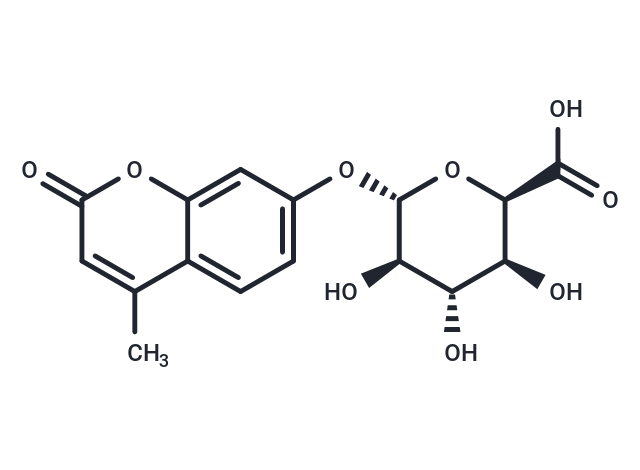Shopping Cart
- Remove All
 Your shopping cart is currently empty
Your shopping cart is currently empty

4-Methylumbelliferyl-α-L-Iduronide is a common substrate for α-L-iduronidase catalytic activity.

| Pack Size | Price | Availability | Quantity |
|---|---|---|---|
| 500 μg | Inquiry | 35 days | |
| 1 mg | Inquiry | 35 days | |
| 5 mg | Inquiry | 35 days |
| Description | 4-Methylumbelliferyl-α-L-Iduronide is a common substrate for α-L-iduronidase catalytic activity. |
| In vitro | Using 4-Methylumbelliferyl-α-L-Iduronide as a substrate, α-L-Iduroinde activity was measured in leukocytes and lymphoblasts obtained from patients with α-L-Iduronide acid deficiency and obligate heterozygotes for the disease. α-L-Iduronide in leukocytes and lymphoblasts from patients and controls was completely different. However, an overlap in activity values was observed in obligate heterozygotes and controls. 4-Methylumbelliferyl-α-L-Iduronide activity has a higher sensitivity, a simpler detection procedure, and a shorter latency period.[1] |
| Molecular Weight | 352.29 |
| Formula | C16H16O9 |
| Cas No. | 66966-09-4 |
| Smiles | CC=1C=2C(=CC(O[C@@H]3O[C@@H](C(O)=O)[C@@H](O)[C@H](O)[C@H]3O)=CC2)OC(=O)C1 |
| Storage | store at low temperature | Powder: -20°C for 3 years | In solvent: -80°C for 1 year | Shipping with blue ice. |
| Solubility Information | Ethanol: 1.00 mg/mL (2.84 mM), Sonication is recommended. DMSO: 1.00 mg/mL (2.84 mM), Sonication is recommended. Methanol: 1.00 mg/mL (2.84 mM), Sonication is recommended. DMF: 1.00 mg/mL (2.84 mM), Sonication is recommended. PBS (pH 7.2): 1.00 mg/mL (2.84 mM), Sonication is recommended. |
Solution Preparation Table | |

Copyright © 2015-2025 TargetMol Chemicals Inc. All Rights Reserved.